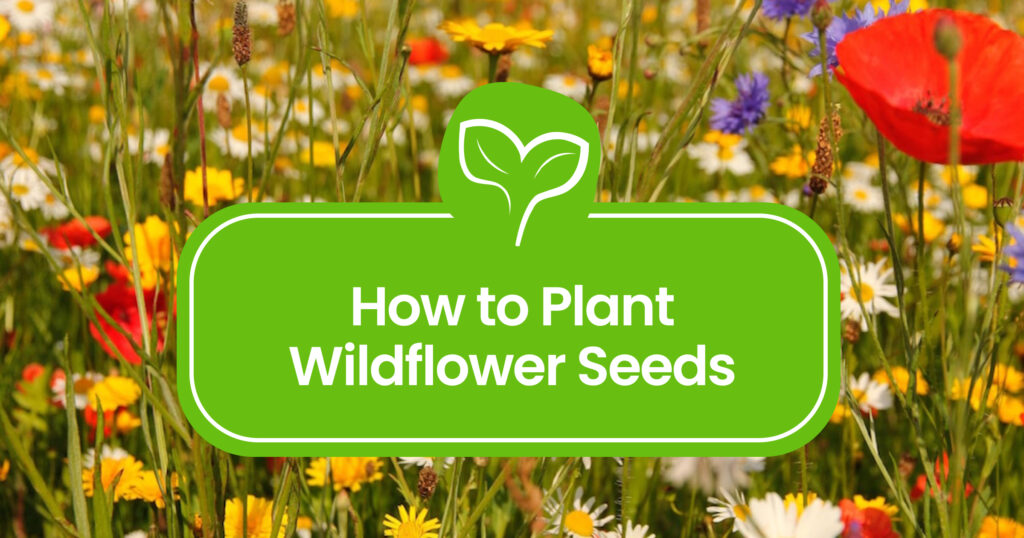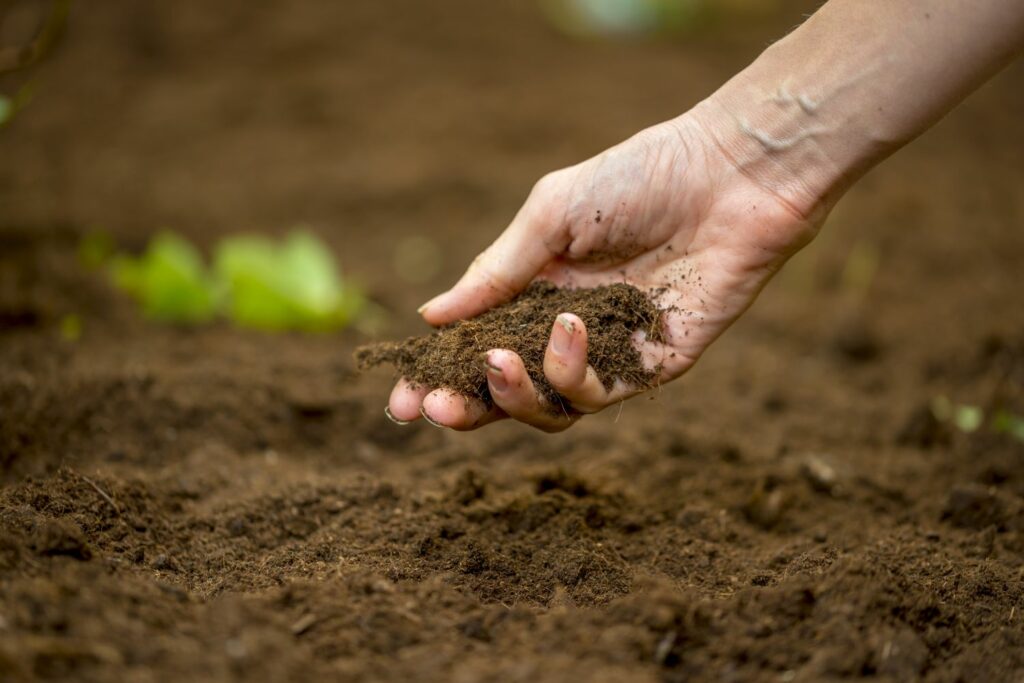
It is advisable to refrain from planting wildflower seeds during inclement weather conditions characterized by strong winds and storms. This is due to the fact that newly planted seeds are susceptible to being washed away by water. Additionally, it is important to exercise caution to prevent birds from picking the seeds out of the ground. The process of planting wildflowers involves four straightforward steps, which are outlined below.
Our first thought might be that since these are wildflowers, and therefore grow in the wild, planting them would not be difficult. These flowers can even grow alongside the road, so you don’t need a specific soil mix. However, as with all plants, wildflowers have conditions that must be met, such as soil temperature, well-spaced seeds, and, last but not least, the time of year when it is best to plant wildflowers.
In this article, we will show you step-by-step how to plant wildflower seeds. First, you have to choose the place where you want to sow them. Then we will show you the planting process, and later on, we will discuss watering practices. The stages of germination are mentioned, together with how to help germination and growth. Lastly, we will look at the behavior of wildflowers in cold and warm environments, and finally, we will look at their impact on wildlife.
How to choose a site for wildflowers?
Wildflowers do not need a special soil mix, they can be planted in ordinary garden soil. If you have grass growing in your garden, the soil is perfect for wildflowers! They do, however, require sunlight, more precisely full sun. Just as wildflowers grow and receive light in the wild, they need direct sunlight in our gardens. On average, these plants need more than 4 hours of direct sunlight.
Drainage is also important: choose a place where there is good drainage and water is well absorbed after a heavy rainfall.
Providing the right space for the wildflower to grow is crucial. Breaking any of these can have negative effects on tender growth. For example, if you choose the wrong time to sow seeds and your soil is near freezing, wildflowers will not grow due to cold damage.
How to prepare the soil for planting the seeds?
The soil needs to be prepared before sowing the seeds. But wait a minute… They grow in the wild, aren’t they? That is true, but we want to make sure before sowing the seed that we give our wildflowers the best chance to grow and flower properly.
Remove grasses and weeds
The “enemy” of wildflowers is natural grass and weeds. Therefore, when planting, these plants must be removed to make room for new wildflowers. In a weedy environment, wildflowers will be overwhelmed by grass and weeds as they grow, so it is important to clear the site.
To remove weeds, you can use rototillers, organic killers, or even soil solarization, the main thing is to ensure that the removal is chemical-free.
Loosen up the soil
Gardening experts often stress that you should not forget to loosen the soil. This not only helps wildflowers grow quickly and efficiently but also reduces the chances of the plant not being able to break out of the ground. Otherwise, when the plant is in its small, tender form, it will not have enough strength to break out, and thus will not be able to grow out of the ground and flower.

How to sow wildflower seeds?
Do not plant wildflower seeds in windy, stormy weather, as freshly planted seeds can be washed out of the ground by water. Also, birds should be careful not to pick the seeds out of the ground. Planting wildflowers consists of a total of 4 simple steps, which are described below.
- Look for a patch of grass if planting directly in the garden or a container if planting in it. If you choose a container, make sure it has a drainage hole.
- Select the wildflower seed mix. These can be premixes that have a positive effect on the environment, for example on bees, and are recommended by experts. This is usually indicated on the packaging of the mix.
- If you have chosen a container, fill it with soil. It is important to use only soil and not to mix it with fertilizer. By using manure, you are making room for competitors that are a threat to wildflowers. If planting directly in the ground, make sure there is no grass or weeds left.
- Sow the seeds in the soil. Sprinkle the contents of the bag over the soil, then add a small layer of soil or compost.
Try to scatter equal portions of seeds in the chosen spot to give a balanced display of blooming wildflowers.

How to water the wildflower seeds?
One of the most important factors for wildflowers is watering. These plants require constant sunlight, which means they can dry out easily. So keep a constant check on how much water they use and water them more regularly if necessary.
Wildflowers do not need special watering techniques. In the beginning, it is best to water the seeds carefully so that they are not washed out of place. No need to worry about humidity either.
What is the process of germinating?
The most common wildflower varieties will start to germinate after about 10 days. Some varieties need more time and can take up to 6 weeks to germinate, but some varieties need even more time. On the seed mix you buy it usually says how long it takes.
How to defend the seeds from wildlife?
Birds can be the biggest threat to seeds if they are planted in the garden. In more open areas, in the wild, deer and wild rabbits can be a problem. Birds can be controlled by planting netting over the plants. To control deer and rabbits, you can plant resistant seeds that contain volatiles and oleoresins that can protect plants from being used as food.

How to deal with wildflowers in different climates?
Wildflowers can be planted in both colder and warmer climates. Planting wildflowers requires that the soil reach a minimum temperature of 55°F (12°C). Experts recommend waiting until the last possible spring frost in colder climates to avoid cold snaps. It’s important to consider the temperature of the ground, not the air temperature, as the deciding factor!
In warmer climates, it is recommended to water the seeds more often. Too much sunlight can cause plants to dry out more quickly. Alternatively, you can buy a drought-tolerant seed mix to reduce the risk of drying out.
What are the benefits of wildflowers?
Wildflowers are extremely beneficial to wildlife and the ecosystem. The benefits of them are described below.
- Food for bees and butterflies
- They contain the ingredients of many of today’s medicines
- They reduce the greenhouse effect
Conclusion
Overall, for wildflowers to bloom colorfully, it is essential to choose the right location, use water appropriate to the climate, and use the right seed mix. We encourage everyone to plant more wildflowers, either in their gardens or in their homes, because they help to reduce climate change and the greenhouse effect, and they blend beautifully into any garden!

